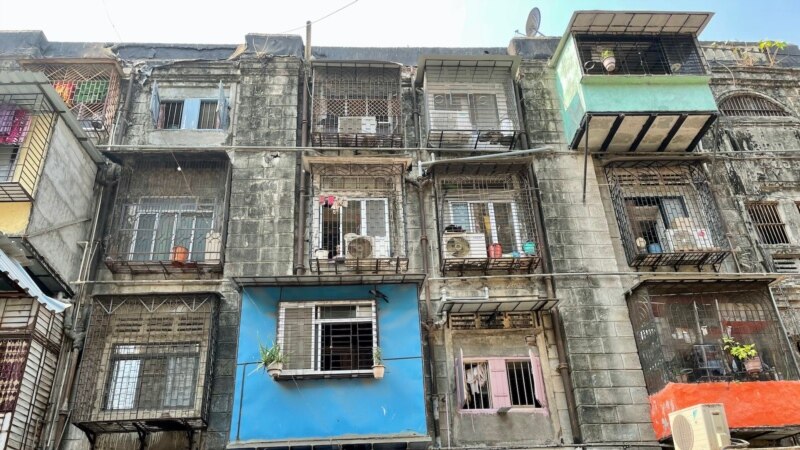
For Mumbai resident Shailesh Kambli a childhood dream is about to translate into reality. The 40-year-old is the third generation of his family living in a cramped, 15-square meter room along with his parents, brother and sister-in-law. These tenements are housed in dilapidated buildings that stretch across about 37 hectares in the heart of India’s financial capital, where real estate is among the most expensive in the world. All around the BDD Chawls, as they are called, prime commercial and residential buildings have mushroomed in recent decades as India’s financial capital, home to more than 20 million people, developed at a frenetic pace. “Whenever I went out, I wanted to own a house, however tiny, in one these buildings,” Kambli recalls. “I even told my uncle that one day I will live in such a place.” Now that aspiration is within his grasp. Under a massive $2 billion redevelopment project, the 16,000 dingy settlements built over four floors will be pulled down to make way for high rise buildings in which the occupants will swap their living quarters for a 46-square meter apartment. It is part of ambitious plans that space-starved Mumbai has long pursued with limited success — clearing up prime land on which old structures, shanties and slums sit to replace them with tall buildings that besides residential units, include office blocks and shopping malls. Some urban planners however have raised concerns that the project will add enormous pressure in an already crowded city that is short on infrastructure. The BDD Chawls, where the rooms built by the British a century ago for migrant cotton mill workers stretch on both sides of a corridor, are in urgent need of a revamp. Inside most homes, a curtain separates the counter at one end that serves as a kitchen from the rest of the space that doubles as a bedroom and a living room. Televisions are mounted over the bed or in a corner. Two bathrooms serve the 20 rooms in each block. The occupants pay a meager rent to the government. The elderly often spend their day in the corridor between the rooms where clothes hang for drying, or in a courtyard outside as they chat or look after small children, while the young go out to work. These days, residents sometimes stop by at a sample flat that is showcased opposite one of the blocks to take a peek into what the future may hold. “I don’t know when my turn will come. It may still take years. But it will be great to have a modern flat,” said 55-year-old Bhagwan Sawant as he proudly points to the neat kitchen, the two bedrooms and two attached toilets. The new complexes will also have a hospital, hostels, schools, and gyms. “The work has started on the first building and it will be ready in three years,” said Prashant Dhatrak, the executive engineer of the project. “But the entire development will take seven years.” The redevelopment project took more than two decades to get off the ground after it was first proposed. However, some urban planners point out that Central Mumbai, where the project is coming up, is already congested with high rise buildings and question how it will bear the additional pressure of more such complexes. They say that in a city with the highest population density in the country, too much of the land is often handed over to developers for residential and commercial complexes instead of making public parks. “Cities cannot be transformed in this way. Redevelopment is necessary but rebuilding has to be done in a sustainable and environmentally friendly manner,” said Sulakshana Mahajan, who as a member of the Mumbai Transformation Support Unit, a state government think-tank set up in 2005, was involved in initial proposals for the redevelopment of the tenements. The think tank was shut down in 2019. “Our initial idea was not to increase density in the area and to restrict the development for existing residents. But under the new plan, there are too many buildings being constructed,” said Mahajan. “Open spaces available per person will be drastically shrunk and the distance between buildings is too little. It will also create a huge strain on services such as water supply, sanitation and transportation.” In an island city with little space to grow except vertically, the search for land has intensified in the last two decades. Authorities have also proposed clearing out Asia’s biggest slum, Dharavi, that sits on two square kilometers of prime space to replace it with skyscrapers and shopping malls, but the plan has made little headway so far. In the BDD Chawls, however the larger question of sustainability is not on the minds of those who have long lived with shared toilets, but only a sense of anticipation. At the same time, there is a creeping sense that a way of life that revolved around the community will end when they eventually move out. “Here, I never have to worry about my mother. All of us work, but we know that someone will look after her if she is unwell,” said Kambli. “But when we shut the door in the new flat, no one will know what is happening inside.” “You just give one shout here and everyone gathers,” laughs Ranjana Gurav. “When there are marriages or celebrations or a problem, we are all there to help each other.”
Most Read